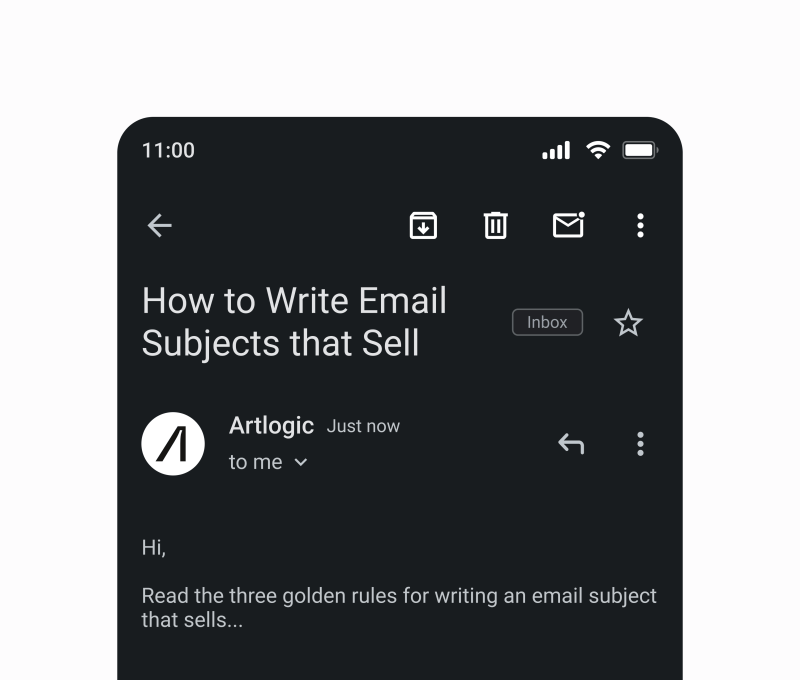When you consider that the average person receives 121 emails a day, if your newsletters, print drops and exhibition openings stand a chance at being opened, your subject line needs to work extremely hard to get noticed.
This means you have precious little space to entice the recipient to open your marketing email and click through to your website or Private View links.
The trick? Six to 10 words (40-60 characters) – that’s the ideal length for an email subject line.
But there's more to it than that…
It can be easy to devote yourself to crafting compelling email copy and then throw together a slapdash subject line. But, if the subject doesn't sing, your collectors will never click and read your beautifully composed email. What a waste.
Here are our top three golden rules for writing an email subject line that sells:
Keep it short, sharp and scintillating
Short: between 6-10 words or 40-60 characters. Sharp: precise and to the point. Scintillating: to sparkle or shine brightly.
A short, sharp, sparkly subject line will glitter like a diamond in a pile of grit. There are no prizes for perfect grammar and full sentences. Say what needs to be said and nothing more.
For example: “50% off popular prints” is better than “We’re now selling our best selling prints at 50% off”.
Should your email subject lines resort to rhetoric?
Yes they should.
The rules of rhetoric have existed for millennia, and they are just as useful for modern marketers who want to create powerful emails as they once were for Ancient Greek philosophers to debate the great questions of life.
The foundations of rhetoric, the art of persuasion, are: ethos (credibility), pathos (appealing to the emotions of your audience), and logos (reasoning). Repetition, alliteration, hyperbole, and repetition are all rhetorical techniques.
Let’s look at how to condense these ancient techniques into a compelling subject line:
“The perfect print? Exclusive pieces selling fast” demonstrates credibility because many people are buying the artwork, so it must be good; and appeals to the emotions of the buyer or collector by creating a sense of urgency.
Test, test and try again
You won’t always get it right. Make sure to analyze the open and click-through rates of your emails to see which ones performed best.
Try A/B testing:split your audience into two groups and send the same email to each group with minor variables, ie: different subject lines. This is a hugely effective way to see what kinds of communication resonate with your collectors and buyers and then apply the most successful elements (like the style of subject line that generated the highest open rate) to future sends.






